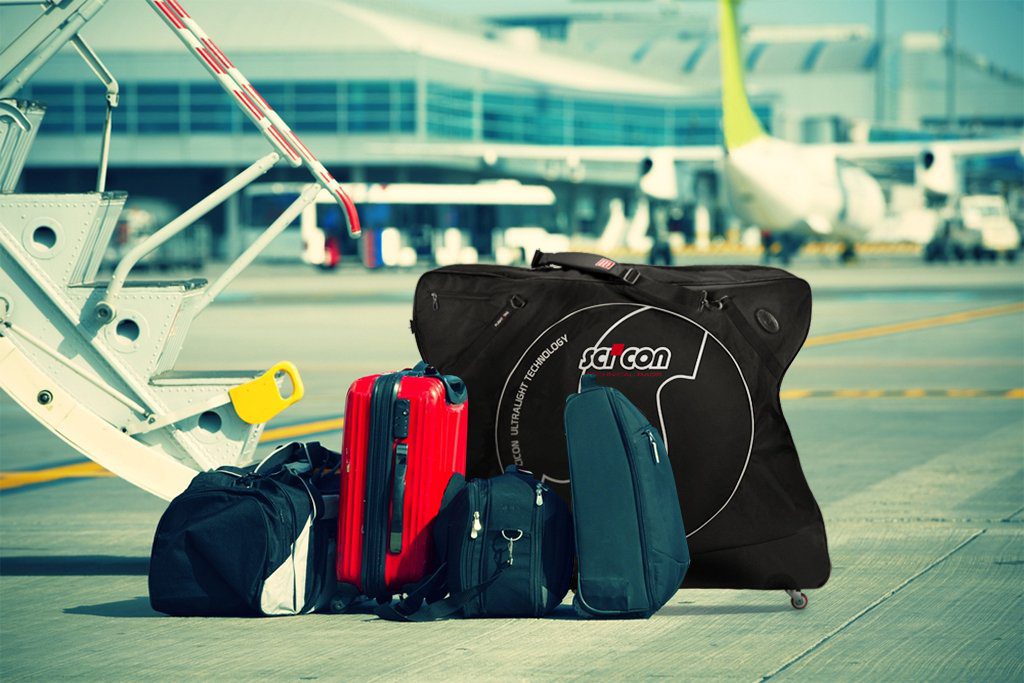The Ultimate Guide to Travelling with Bikes

Travelling with bikes for the first time can be daunting. Whether you’re heading out on your holiday by train, plane, or have an organised tour company shipping your bikes on your behalf, it’s important to make sure they are going to make the trip safely.
Safely packing your bicycle for an airline comes down to considering the types of stress it is likely to come under when out of your hands. In most scenarios, bikes become damaged by the automated conveyor systems in airports, rather than heavy-handed baggage staff.
Your bag will be pushed back and forth along metal channels and shoots by large mechanical arms, and dragged up inclines by conveyor belts. Anything protruding is in danger of getting snagged or rubbed, causing damage to your bike, bag, or both.
How to pack your bicycle:
1 Choose a good quality bag. A hard-shelled box or soft bike bag are your best bets, having been designed specifically for the task with pockets for wheels and gear, and often extra accessories for added protection. You can’t go wrong with Scicon, or for a local rental hub try Bike Box On-line.
2 Remove anything that sticks out. Take off your pedals, remove handlebars entirely, and rotate them so they sit alongside the top tube – absolutely don’t have them poking out of the zips. A little extra bubble wrap or cardboard on protruding handlebars isn’t going to stop them from getting rubbed or snagged on an airport conveyor.
3 Remove the rear derailleur. With the derailleur hanging out to one side, it is in danger of being snagged through your bag, bashed or crushed. With nowhere to go, the rear hanger is highly likely to be bent or even snapped off. Undo the hangar bolt with an Allen key, wrap the rear derailleur in a small towel and cable tie the bundle to the chainstay. The towel will prevent the frame from being scratched, but still allow the derailleur enough movement to protect it from damage.
4 Cable-Tie the chain to the big ring. The teeth on your big chainring will chew through pipe lagging, towels, and your padded bag if you’re not careful. A bash at the right angle can easily chip a tooth even through soft padding. You can securely hold the chain on the big ring with a couple of small cable ties which will form a sheath to keep the chainring safe. Any padding put on top will be saved from a big-ring-mauling, and any stress on the teeth will be distributed over a wider area.
5 Brace the forks and dropouts. While more expensive bike bags and boxes may come with some form of bracing, most will not. Old hubs will do, and some companies produce braces specifically for this purpose. Your local bike shop will likely have a box of old plastic spacers which came on their frames when they were delivered. Chances are they will have held onto some to give out to customers who need them. They are light, and do exactly what you need them to.
6 Get a bicycle insurance quote. Yellow Jersey offers short term bicycle insurance, so you only need to pay a premium for your trip. Your bike is covered against damage by the airline, theft from your hotel room, crash damage when you’re out riding, and a lot more on top. It’s also likely to be less expensive than you think.
Get a bicycle insurance quote

Travelling with bikes – Travel Insurance
Travel insurance has always been a little bit tricky for cycling, with cover often ambiguous and rarely including all of the features we need when travelling with bikes.
The best comparison you can make is with winter sports. If we want to go skiing and be covered for medical mishaps or repatriation, our insurance has to list winter sports specifically. The same is true for cycling abroad, but unfortunately, the travel insurers don’t make it anywhere near as easy.
Have I checked it covers holidays where the primary purpose is cycling?
Have I checked it covers me if I’m taking part in a timed event?
We have seen plenty of travel insurance products that list cycling as a covered activity, but exclude racing. Their definition of a ‘race’ then includes any organised event where you are given a time at the end, excluding pretty much every big European sportive.
There are a few travel insurers that will cover triathlon, but most have restrictions on distances. If you are entering an Olympic distance race, there’s not much use in travel insurance that only covers up to sprint distance.
Most of us carry EHIC (gradually being replaced by GHIC) cards with us on the continent, but few are aware of their limitations. While riding in the Alps, Pyrenees, Spain, Portugal and Mallorca, public hospitals are far and few between. If you have an accident and get taken to a private hospital in one of these areas, your EHIC card won’t cover you. Bear in mind however that most insurers require that you have an EHIC card while traveling in Europe.
If in doubt, ask. If you’re not sure if your ride or holiday is covered by an insurance company, give them a call. Tell them exactly what you will be doing with your bike and ask if their insurance covers it.
Yellow Jersey’s Cycling Travel Insurance is designed specifically to remove these doubts, providing the cover you need regardless of how you are using your bike, wherever in the world you are.
Get Travel Insurance







